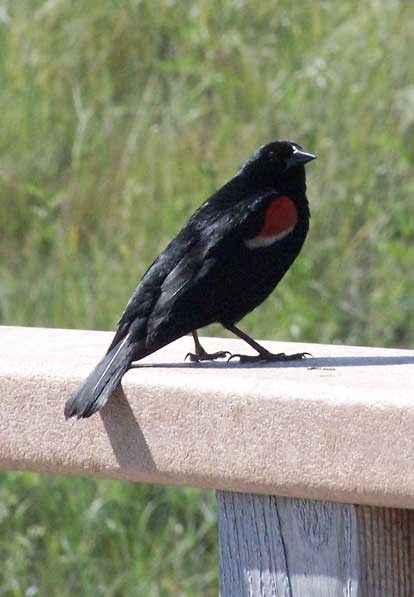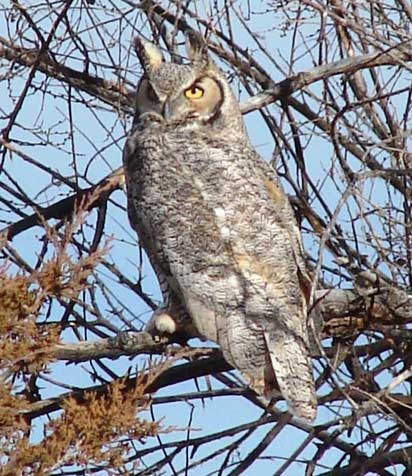
Agate's bird diversity is in part due to the Niobrara River, which creates an extensive wetland and riparian area in the park. This area is moister and cooler than the upland areas and attracts birds such as the Red-winged Blackbird, who are easily identified by their jet black bodies and red or yellow wing patches. Marsh Wrens, Killdeer, Belted Kingfisher, Blue Heron, and Northern Rough-winged Swallows also frequent the wetland areas, making this the most diverse bird area on the park. Blue Herons are a large, graceful crane-like bird, whose back and wings are a blue-gray giving the heron its name. They stand up to 52" tall and wade in the river and ponds in search of fish. The grassy upland prairie area is above the wetlands, below the rocky buttes along the park trails and roads. The grasses provide cover for the birds and their nests, which are often built on the ground. In this area visitors commonly sight Lark Sparrows, Western Meadowlarks, Ring-necked Pheasant, Horned Larks and Grasshopper Sparrows. Meadowlarks are medium size, perching birds with dusty brown wings and a bright yellow chest. The third distinct bird habitat type is the rocky bluffs, where the ancient mammal fossils are found. Birds such as the Rock Wrens, Lark Sparrows and Cliff Swallows inhabit these areas. Cliff Swallows build mud nests under rock outcroppings and can be identified by their dark wings and tail, rust-colored rump, chestnut throat and whitish belly. Rock Wrens nest under overhanging rocks or in crevices between rocks and line their nests with feathers, wool and grasses. They are small brownish tan birds that spend most of their time in drier, rocky areas. 
Agate has a few birds of prey that are year round residents of the park and a few that are seasonally present. The Red-tailed Hawks are year round residents with a nest near the Niobrara, but search the entire western end of the park for food. Great-horned Owls nest year round in trees at the west end of the park, but are seen throughout the park during the night while they search for rodents. Summer residents include Golden Eagles, Barn Owls, Prairie Falcons and Swainson's Hawks. Winter residents are Rough-legged Hawk, Short-eared Owls and occasionally Bald Eagles. |
Last updated: April 25, 2024
